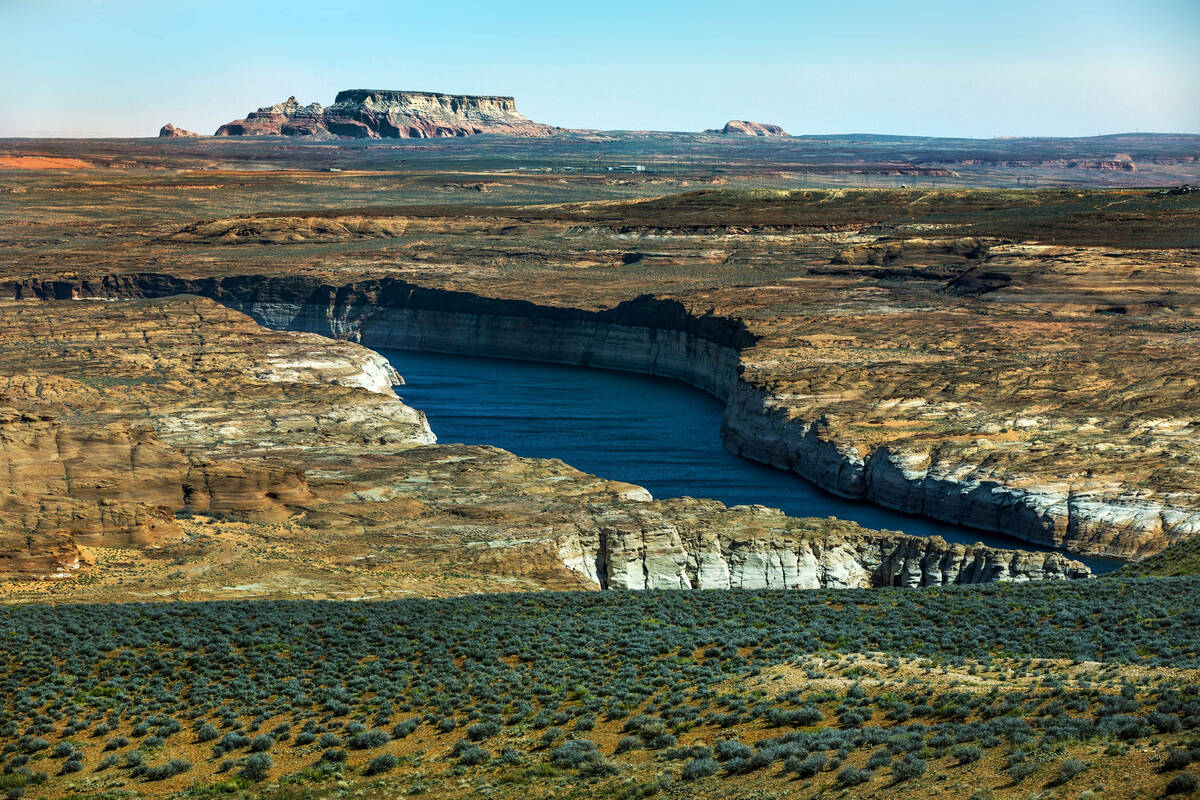Could a public lands deal amount to a water grab for Utah?
A controversial federal budget amendment would transfer about 10,000 acres of public land in Utah to a water district — reviving concerns in the Colorado River Basin about a pipeline from the country’s second-biggest reservoir.
Rep. Celeste Maloy, R-Utah, has proposed a land transfer to Washington County in Southern Utah, and water activists are drawing comparisons to the contentious Lake Powell pipeline project because of similarities to the pipeline’s map. Some say it’s a water grab that could have implications for Southern Nevada.
In a joint statement Wednesday from Reps. Susie Lee, D-Nev., and Greg Stanton, D-Ariz., they called on House Republicans “to immediately withdraw this reckless public land sale proposal which looks to be a Trojan horse to steal Nevadans’ and Arizonans’ water.”
Nevadans may have heard of last week’s additions to the budget because of the controversy surrounding a related proposal from the state’s sole Republican member of Congress, Rep. Mark Amodei. He proposed the sale of 93,000 acres of public land in an effort to alleviate the state’s housing crisis to the dismay of his Democratic counterparts in Nevada.
Zach Renstrom, general manager of the Washington County Water Conservancy District, denied that the land would be used for the pipeline.
“Anybody that’s claiming that this land transfer has anything to do with the Lake Powell pipeline is incorrect,” he said in a Wednesday interview. “They’re just wrong.”
What is the proposed Lake Powell pipeline?
The 143-mile pipeline idea, which drew the ire of water managers from the remaining six states in the basin and nonprofits, would have transported 86,000 acre-feet of water — or 28 billion gallons — each year from Lake Powell to support growth in the area around St. George, Utah. The city is about 120 miles northeast of Las Vegas.
Southern Nevada depends almost entirely on the Colorado River and Lake Mead for its water supply, connecting the region to the other six states who do, as well. Any extra use or decline in Lake Powell — which was about 33 percent full on Wednesday — could affect water deliveries to Lake Mead as the basin reconciles with decadeslong drought.
Though Renstrom denied his water district’s interest in pursuing the pipeline, an agency representative made public statements to the Salt Lake Tribune as recently as December 2023 that the defunct project still held importance for the region’s long-term water supply.
A spokesperson for the agency confirmed on Wednesday that the state of Utah still has, on paper, the right to use 86,000 acre-feet of water — something that advocates like the Great Basin Water Network’s Kyle Roerink said could lead to the agency going back on its word.
“If they are not foreclosing that paper water right that they have, this could ultimately be used for anything down the road,” Roerink said. “Then we’re just having them make an empty promise.”
Land planned for re-use facility
In Maloy’s remarks announcing her amendment, she did not list how each of the 60 parcels of land would be used, but called attention to the desire for a more stable water supply in the county.
“Because this is a desert region, Washington County is also proactively responding to the increasing pressures of water resources and water use,” Maloy said. “Many of the difficulties we face at a local level … relate to the fact that the county is surrounded by federal land.”
The similarities between the Lake Powell pipeline maps and the proposed land transfer caught the attention of Rep. Lee, whose office said the language leaves the use of the land vague.
“Nothing in their bill prevents them from using the land for a pipeline, and given that this was a surprise proposal done in the middle of the night, we have little reason to trust them,” said Chris D’Aloia, a spokesperson for Lee, in a statement.
The big ticket item that Renstrom said the land would be used for is a water re-use facility that will help the water district meet its strict conservation goals.
“If you look at our 20-year plan that outlines how we’re going to make sure we have water, the Lake Powell pipeline is not included in that,” Renstrom said. “What we are focusing here is on water conservation, and we have passed some of the most stringent water conservation measures, definitely in the state of Utah, if not most of the western United States.”
The plan Renstrom referenced does say the pipeline is “a critical component for meeting Washington County’s long-term water supply needs” but cites “hydrological, environmental, and political issues impacting the Colorado River Basin” as causing uncertainty to the project.
A version of the House of Representatives’ budget soon will be introduced on the floor, where it will need to pass a vote.
Contact Alan Halaly at ahalaly@reviewjournal.com. Follow @AlanHalaly on X.


















